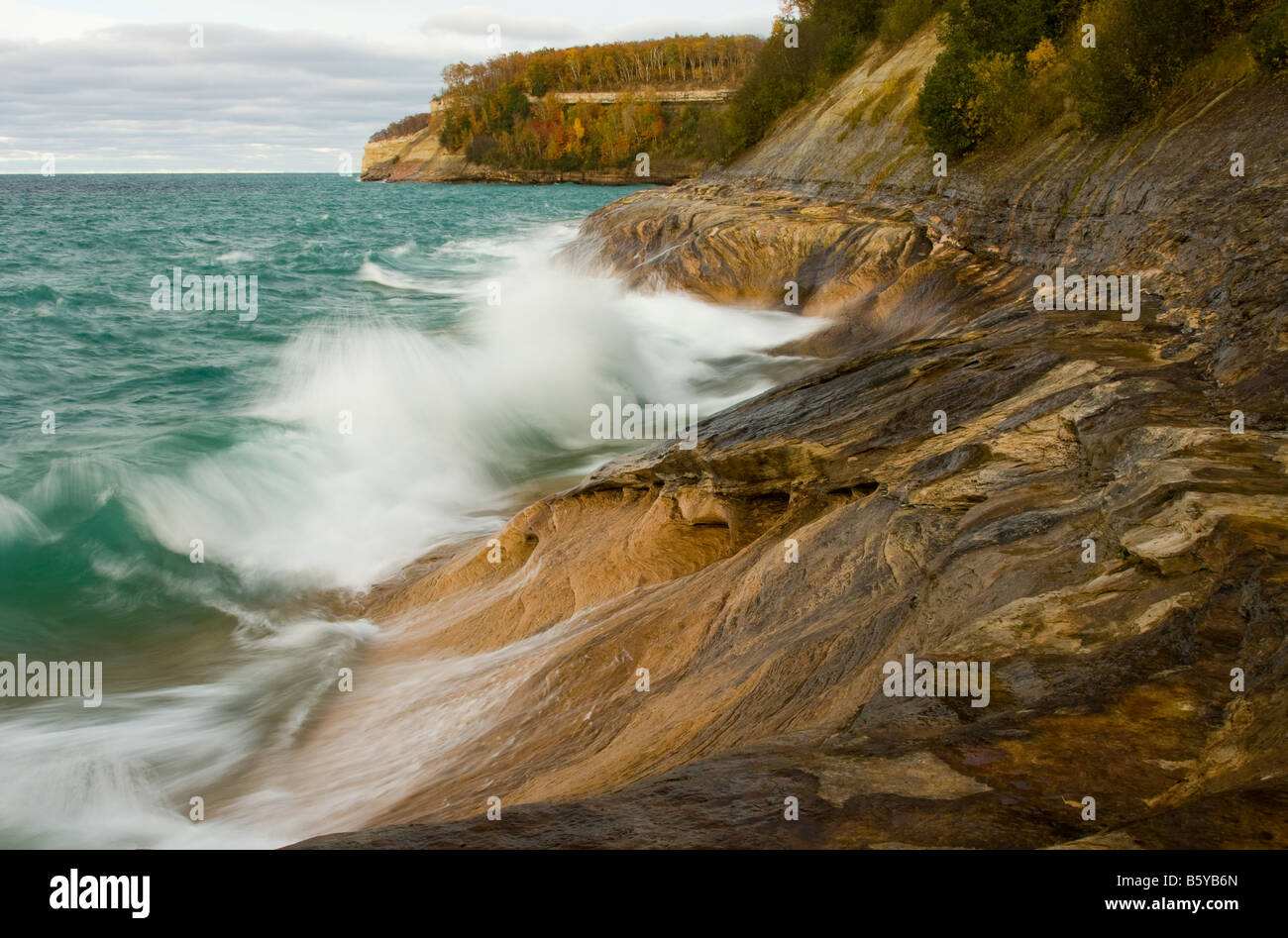
Two significant weather events are currently impacting the United States. In Alaska, the remnants of a powerful typhoon have caused widespread flooding, leaving over 20 people unaccounted for. Simultaneously, a potent Nor’easter is battering the East Coast, bringing coastal flooding, heavy rain, and strong winds.
These events highlight the increasing vulnerability of coastal communities to extreme weather and the challenges of disaster preparedness and response.
Alaskan Communities Devastated by Typhoon Remnants
Widespread Flooding and Damage
The western coast of Alaska is grappling with the aftermath of severe flooding triggered by the remnants of a powerful typhoon. The storm surge inundated numerous communities, causing significant damage to homes, infrastructure, and vital resources. The scope of the disaster is still unfolding as rescue and assessment teams struggle to reach affected areas.
Many homes have been completely destroyed, and entire villages are underwater. The loss of property is extensive, but the primary concern remains the safety and well-being of residents.
Search and Rescue Efforts
Search and rescue operations are underway, complicated by the remote location of many of the affected communities and the ongoing severe weather conditions. Over 20 people remain unaccounted for, and authorities are working tirelessly to locate them.
The Alaska National Guard and other emergency response agencies have been deployed to assist with the search and rescue efforts. However, the vast distances and challenging terrain are making the operation extremely difficult.
Impact on Infrastructure and Resources
The flooding has severely impacted critical infrastructure, including roads, bridges, and communication systems. Many communities are without power and access to clean water, exacerbating the already dire situation.
The disruption to transportation networks is hindering the delivery of essential supplies, such as food, medicine, and shelter. Efforts are being made to restore these vital services as quickly as possible, but the extent of the damage is proving to be a significant obstacle.
East Coast Braces for Powerful Nor’easter
Coastal Flooding and Heavy Rain
While Alaska is dealing with the aftermath of typhoon-induced flooding, the East Coast is bracing for a powerful Nor’easter. The storm is expected to bring significant coastal flooding, heavy rain, and strong winds to a wide swath of the region.
Coastal communities are particularly vulnerable to the impacts of the storm surge, which could inundate low-lying areas and cause significant property damage. Heavy rainfall is also expected to lead to widespread flooding, further compounding the challenges.
Strong Winds and Power Outages
In addition to flooding, the Nor’easter is forecast to bring strong winds that could topple trees, damage power lines, and cause widespread power outages. Residents are being urged to secure loose objects and prepare for potential disruptions to essential services.
Utility companies are mobilizing crews to respond to potential power outages and restore service as quickly as possible. However, the extent of the damage may make restoration efforts challenging.
Travel Disruptions
The Nor’easter is expected to cause significant travel disruptions, including flight cancellations, road closures, and delays on public transportation. Travelers are being advised to check with their airlines and transportation providers before heading out.
The combination of heavy rain, strong winds, and flooding is making travel conditions extremely hazardous. Residents are being urged to avoid unnecessary travel and stay off the roads if possible.
Comparing the Two Disasters
Different Causes, Similar Impacts
While the Alaskan flooding and the East Coast Nor’easter are caused by different weather phenomena, they share some common impacts. Both events are causing widespread flooding, damage to infrastructure, and disruptions to essential services.
Both events also highlight the vulnerability of coastal communities to extreme weather and the challenges of disaster preparedness and response. The severity of these events underscores the need for increased investment in infrastructure, emergency management, and climate resilience.
Geographic Differences
The Alaskan flooding is primarily affecting remote, sparsely populated communities, while the East Coast Nor’easter is impacting densely populated urban areas. This difference in geography presents unique challenges for disaster response.
In Alaska, the remoteness of the affected communities makes it difficult to deliver aid and conduct search and rescue operations. On the East Coast, the density of the population makes it challenging to evacuate people and manage traffic congestion.
Long-Term Recovery
Both the Alaskan communities and the East Coast will face a long road to recovery after these events. The economic and social impacts of the disasters could be significant, and it will take time and resources to rebuild damaged infrastructure and restore essential services.
The recovery process will require a coordinated effort from government agencies, non-profit organizations, and the private sector. It will also be important to address the underlying vulnerabilities that made these communities susceptible to these disasters in the first place.
The Role of Climate Change
Increasing Frequency and Intensity of Extreme Weather Events
Many scientists believe that climate change is playing a role in the increasing frequency and intensity of extreme weather events, such as typhoons and Nor’easters. As the planet warms, the oceans are becoming warmer, which can fuel the development of these storms.
Climate change is also causing sea levels to rise, which makes coastal communities more vulnerable to flooding. The combination of rising sea levels and more intense storms is creating a perfect storm for coastal disasters.
Mitigation and Adaptation
Addressing climate change will require both mitigation and adaptation measures. Mitigation involves reducing greenhouse gas emissions to slow down the rate of warming. Adaptation involves taking steps to protect communities from the impacts of climate change, such as building seawalls and improving drainage systems.
Both mitigation and adaptation are essential to building a more resilient future. It will require a global effort to reduce emissions and protect vulnerable communities from the impacts of climate change.
The Need for Action
The Alaskan flooding and the East Coast Nor’easter serve as a stark reminder of the need for action on climate change. These events are a wake-up call to the urgent need to reduce emissions and protect communities from the impacts of extreme weather.
Failure to act will only lead to more frequent and intense disasters in the future. The time to act is now to protect our communities and build a more sustainable future.
Community Resilience and Response
Local Efforts
In both Alaska and along the East Coast, local communities are at the forefront of the response. Neighbors are helping neighbors, and local organizations are providing critical support to those in need.
These grassroots efforts are essential to the recovery process. They demonstrate the resilience and strength of communities in the face of adversity.
Government Assistance
Government agencies at the local, state, and federal levels are providing assistance to the affected communities. This includes financial aid, emergency shelter, and logistical support.
The government response is critical to ensuring that communities have the resources they need to recover from these disasters. However, it is also important to ensure that the assistance is delivered in a timely and efficient manner.
Long-Term Support
The recovery process will take time, and long-term support will be needed to help communities rebuild and recover. This includes mental health services, job training, and financial counseling.
It is important to remember that the impacts of these disasters will be felt for years to come. Providing long-term support is essential to ensuring that communities can fully recover and thrive.
Severe flooding in Alaska following the remnants of a typhoon, while a powerful Nor’easter threatens the East Coast with coastal flooding and heavy rain.
Looking Ahead
Preparing for Future Events
The Alaskan flooding and the East Coast Nor’easter highlight the importance of preparing for future extreme weather events. This includes investing in infrastructure, improving emergency management plans, and building community resilience.
It is also important to educate the public about the risks of extreme weather and how to prepare for these events. By taking proactive steps, we can reduce the impacts of future disasters.
Building a More Resilient Future
Building a more resilient future will require a multi-faceted approach that includes mitigation, adaptation, and community engagement. It will also require a commitment to equity and social justice, ensuring that vulnerable communities are not left behind.
By working together, we can create a future where communities are better prepared for and able to recover from the impacts of extreme weather events.
The Importance of Collaboration
Addressing the challenges posed by extreme weather events requires collaboration across all sectors of society. This includes government agencies, non-profit organizations, the private sector, and individual citizens.
By working together, we can leverage our collective resources and expertise to build a more resilient and sustainable future. See related weather updates.
Key Takeaways
- Alaska is facing severe flooding due to typhoon remnants, with over 20 people unaccounted for.
- The East Coast is bracing for a powerful Nor’easter, bringing coastal flooding and heavy rain.
- Both events highlight the vulnerability of coastal communities to extreme weather.
- Climate change is believed to be exacerbating the frequency and intensity of these events.
- Community resilience, government assistance, and long-term support are crucial for recovery.
FAQ
What caused the flooding in Alaska?
The flooding in Alaska was caused by the remnants of a powerful typhoon that moved into the region, bringing storm surges and heavy rainfall.
What is a Nor’easter?
A Nor’easter is a type of storm that typically occurs along the East Coast of North America. They are characterized by strong winds from the northeast, heavy precipitation, and coastal flooding.
How is climate change related to these events?
Many scientists believe that climate change is contributing to the increasing frequency and intensity of extreme weather events, such as typhoons and Nor’easters. Warmer oceans and rising sea levels can exacerbate these storms.
What can be done to prepare for future events?
Preparing for future extreme weather events includes investing in infrastructure, improving emergency management plans, educating the public, and building community resilience. Addressing climate change through mitigation and adaptation is also crucial.
How can I help those affected by these disasters?
You can help by donating to reputable relief organizations, volunteering your time, and spreading awareness about the situation. Supporting long-term recovery efforts is also important.
What resources are available for those affected?
Resources available include government assistance programs, emergency shelters, food banks, and mental health services. Contact your local emergency management agency for more information.
In conclusion, the concurrent crises of the Alaskan flooding and the East Coast Nor’easter serve as potent reminders of the destructive power of nature and the increasing urgency of addressing climate change. As communities grapple with immediate rescue and relief efforts, the long-term focus must shift towards building resilience, mitigating future risks, and fostering a collaborative approach to disaster preparedness.
Consider donating to relief funds or volunteering your time to assist those affected by these disasters. Every contribution, no matter how small, can make a significant difference in the lives of those struggling to rebuild their homes and communities.

